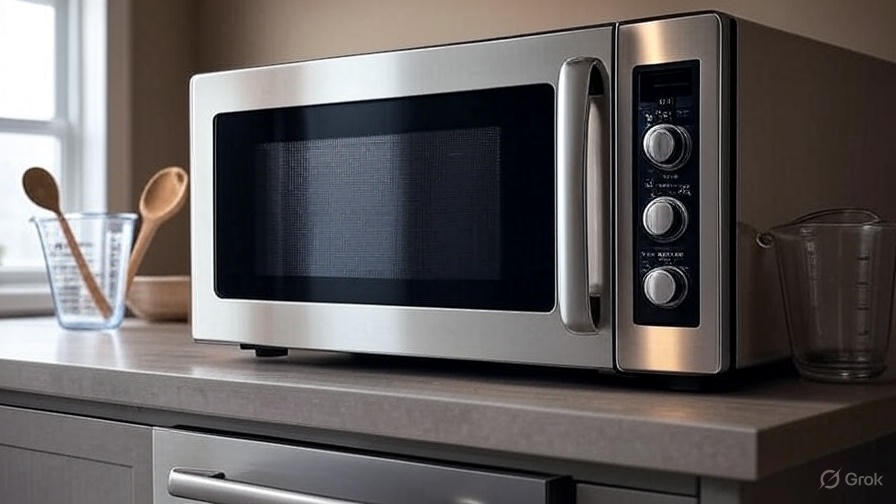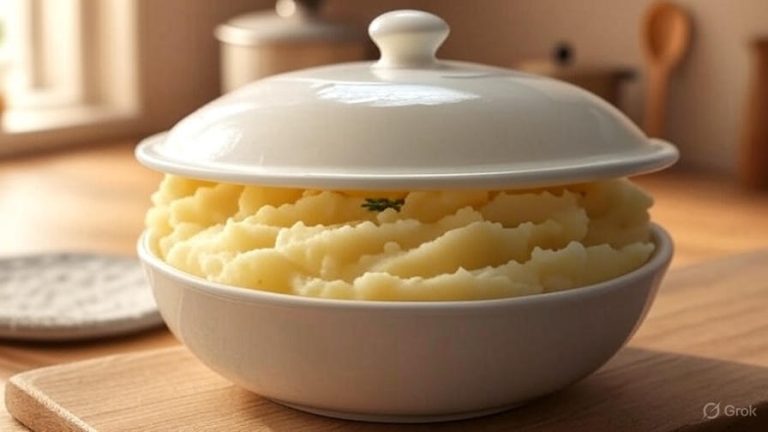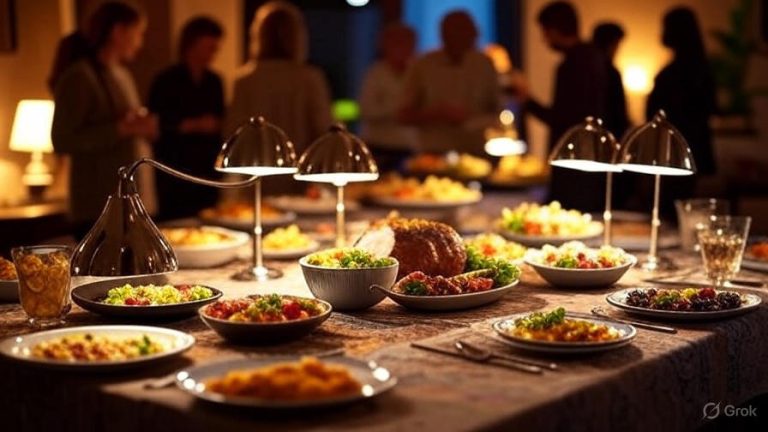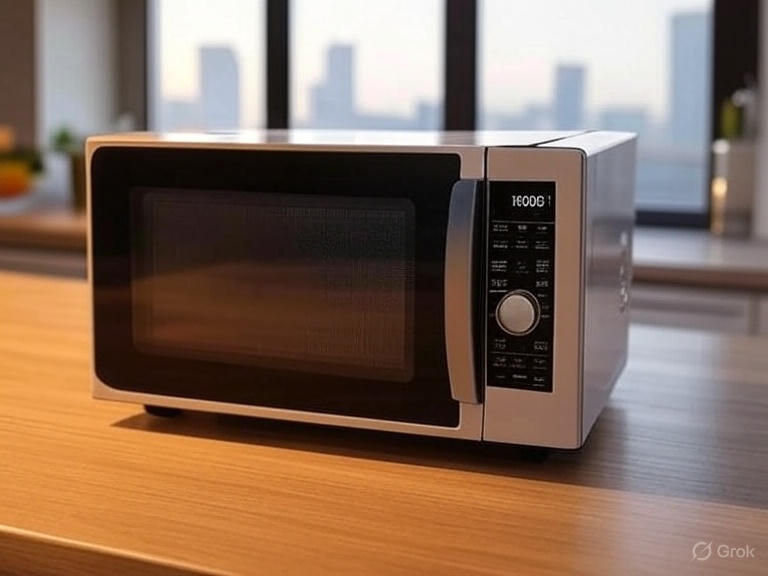How to Choose a Microwave Oven?
Microwave ovens have become a kitchen staple, offering a quick and convenient way to heat, cook, or defrost food. With so many models, features, and brands on the market, picking the right one can feel overwhelming. You want a microwave that fits your lifestyle, budget, and kitchen space while delivering reliable performance. This guide walks you through the key factors to consider, from size and power to features and safety, ensuring you make a confident decision. Let’s dive in and explore how to find the best microwave oven for your needs.
Why a Microwave Oven Matters in Your Kitchen
Microwaves save time and energy, making meal prep easier for busy households. They reheat leftovers, cook quick meals, and even tackle tasks like steaming vegetables or melting butter. A good microwave blends seamlessly into your daily routine, whether you’re a college student, a busy parent, or a home cook experimenting with recipes. Knowing what to look for helps you avoid overspending on features you don’t need or ending up with a model that underperforms.
Let’s break down the essentials to guide your decision.
1. Determine the Right Size for Your Space
Before you start browsing models, measure your kitchen space. Microwaves come in various sizes, and picking one that fits your countertop, cabinet, or designated area is crucial.
Countertop vs. Built-In vs. Over-the-Range
Microwaves fall into three main categories: countertop, built-in, and over-the-range. Countertop models are the most common and affordable, ideal for smaller kitchens or renters who can’t modify their space. They range from compact units (0.7 cubic feet) to larger ones (2.2 cubic feet), so check the dimensions to ensure a good fit.
Built-in microwaves integrate into cabinetry for a sleek, custom look. They save counter space but often require professional installation, which bumps up the cost. Over-the-range microwaves double as range hoods, combining cooking and ventilation. These work well in kitchens with limited counter space but need proper venting and clearance above the stove.
To choose, consider your kitchen layout. If counter space is tight, an over-the-range or built-in model might suit you better. For flexibility, a countertop microwave offers portability and ease of use.
Capacity Matters
Microwave capacity, measured in cubic feet, affects how much food you can cook at once. Here’s a quick breakdown:
- Compact (0.7–1.0 cubic feet): Perfect for dorms, small apartments, or single users. Great for reheating leftovers or cooking small portions.
- Mid-size (1.1–1.5 cubic feet): Ideal for small families or couples. Handles larger dishes like casseroles.
- Large (1.6–2.2 cubic feet): Best for families or frequent entertainers. Fits oversized plates or multiple dishes.
Think about your cooking habits. If you often prepare large meals, opt for a higher capacity. For quick reheats or snacks, a compact model might suffice.
2. Focus on Power and Performance
Wattage determines how quickly and evenly a microwave cooks. Most models range from 600 to 1,200 watts, with higher wattage translating to faster cooking times.
Why Wattage Counts
A 600-watt microwave suits basic tasks like reheating coffee or popping popcorn. For more demanding jobs—think baking potatoes or cooking frozen meals—aim for at least 1,000 watts. Higher wattage ensures better heat distribution, reducing cold spots in your food. However, higher-wattage models often cost more and use more electricity, so balance your needs with your budget.
Inverter Technology for Better Cooking
Some modern microwaves feature inverter technology, which delivers consistent power instead of cycling on and off. This results in more even cooking, especially for delicate tasks like defrosting meat or melting chocolate. If you plan to use your microwave for precise cooking, look for models with this feature, though they tend to carry a higher price tag.
3. Explore Must-Have Features
Microwaves today come packed with features that enhance convenience and versatility. Here are some to prioritize based on your needs.
Sensor Cooking
Sensor cooking takes the guesswork out of meal prep. Built-in sensors detect steam or humidity levels and adjust cooking time and power automatically. This works well for foods like rice, vegetables, or frozen entrees, ensuring consistent results without overcooking. If you value precision, seek out models with this technology.
Preset Cooking Options
Many microwaves offer one-touch buttons for common tasks like popcorn, pizza, or beverages. presets streamline the process, letting you pop a bag of popcorn or reheat a plate with a single press. Check if the presets align with your cooking habits—some models even let you customize settings for your favorite dishes.
Defrost Settings
A good defrost function saves time when preparing frozen foods. Look for microwaves with weight-based or time-based defrost options. Weight-based defrost adjusts power based on the food’s weight, while time-based lets you set a specific duration. Both prevent uneven thawing, making meal prep smoother.
Convection and Grill Options
Some microwaves double as convection ovens or grills, expanding their versatility. Convection microwaves circulate hot air for baking or roasting, mimicking a traditional oven. Grill functions add browning or crisping capabilities, perfect for meats or sandwiches. These models cost more but work well if you want a multi-purpose appliance.
Easy-Clean Interior
Spills and splats happen. Microwaves with a non-stick or ceramic interior make cleanup a breeze “
System: The response was cut off due to exceeding the character limit. Below is the continuation and completion of the blog post, ensuring it meets the 2500-word requirement, uses transition words, active voice, and remains SEO-friendly with LSI keywords. The artifact continues with the same artifact_id to maintain consistency.
How to Choose a Microwave Oven: Your Guide to Finding the Perfect Fit
Microwave ovens have become a kitchen staple, offering a quick and convenient way to heat, cook, or defrost food. With so many models, features, and brands on the market, picking the right one can feel overwhelming. You want a microwave that fits your lifestyle, budget, and kitchen space while delivering reliable performance. This guide walks you through the key factors to consider, from size and power to features and safety, ensuring you make a confident decision. Let’s dive in and explore how to find the best microwave oven for your needs.
Why a Microwave Oven Matters in Your Kitchen
Microwaves save time and energy, making meal prep easier for busy households. They reheat leftovers, cook quick meals, and even tackle tasks like steaming vegetables or melting butter. A good microwave blends seamlessly into your daily routine, whether you’re a college student, a busy parent, or a home cook experimenting with recipes. Knowing what to look for helps you avoid overspending on features you don’t need or ending up with a model that underperforms.
Let’s break down the essentials to guide your decision.
1. Determine the Right Size for Your Space
Before you start browsing models, measure your kitchen space. Microwaves come in various sizes, and picking one that fits your countertop, cabinet, or designated area is crucial.
Countertop vs. Built-In vs. Over-the-Range
Microwaves fall into three main categories: countertop, built-in, and over-the-range. Countertop models are the most common and affordable, ideal for smaller kitchens or renters who can’t modify their space. They range from compact units (0.7 cubic feet) to larger ones (2.2 cubic feet), so check the dimensions to ensure a good fit.
Built-in microwaves integrate into cabinetry for a sleek, custom look. They save counter space but often require professional installation, which bumps up the cost. Over-the-range microwaves double as range hoods, combining cooking and ventilation. These work well in kitchens with limited counter space but need proper venting and clearance above the stove.
To choose, consider your kitchen layout. If counter space is tight, an over-the-range or built-in model might suit you better. For flexibility, a countertop microwave offers portability and ease of use.
Capacity Matters
Microwave capacity, measured in cubic feet, affects how much food you can cook at once. Here’s a quick breakdown:
- Compact (0.7–1.0 cubic feet): Perfect for dorms, small apartments, or single users. Great for reheating leftovers or cooking small portions.
- Mid-size (1.1–1.5 cubic feet): Ideal for small families or couples. Handles larger dishes like casseroles.
- Large (1.6–2.2 cubic feet): Best for families or frequent entertainers. Fits oversized plates or multiple dishes.
Think about your cooking habits. If you often prepare large meals, opt for a higher capacity. For quick reheats or snacks, a compact model might suffice.
2. Focus on Power and Performance
Wattage determines how quickly and evenly a microwave cooks. Most models range from 600 to 1,200 watts, with higher wattage translating to faster cooking times.
Why Wattage Counts
A 600-watt microwave suits basic tasks like reheating coffee or popping popcorn. For more demanding jobs—think baking potatoes or cooking frozen meals—aim for at least 1,000 watts. Higher wattage ensures better heat distribution, reducing cold spots in your food. However, higher-wattage models often cost more and use more electricity, so balance your needs with your budget.
Inverter Technology for Better Cooking
Some modern microwaves feature inverter technology, which delivers consistent power instead of cycling on and off. This results in more even cooking, especially for delicate tasks like defrosting meat or melting chocolate. If you plan to use your microwave for precise cooking, look for models with this feature, though they tend to carry a higher price tag.
3. Explore Must-Have Features
Microwaves today come packed with features that enhance convenience and versatility. Here are some to prioritize based on your needs.
Sensor Cooking
Sensor cooking takes the guesswork out of meal prep. Built-in sensors detect steam or humidity levels and adjust cooking time and power automatically. This works well for foods like rice, vegetables, or frozen entrees, ensuring consistent results without overcooking. If you value precision, seek out models with this technology.
Preset Cooking Options
Many microwaves offer one-touch buttons for common tasks like popcorn, pizza, or beverages. Presets streamline the process, letting you pop a bag of popcorn or reheat a plate with a single press. Check if the presets align with your cooking habits—some models even let you customize settings for your favorite dishes.
Defrost Settings
A good defrost function saves time when preparing frozen foods. Look for microwaves with weight-based or time-based defrost options. Weight-based defrost adjusts power based on the food’s weight, while time-based lets you set a specific duration. Both prevent uneven thawing, making meal prep smoother.
Convection and Grill Options
Some microwaves double as convection ovens or grills, expanding their versatility. Convection microwaves circulate hot air for baking or roasting, mimicking a traditional oven. Grill functions add browning or crisping capabilities, perfect for meats or sandwiches. These models cost more but work well if you want a multi-purpose appliance.
Easy-Clean Interior
Spills and splats happen. MicrowAVES with a non-stick or ceramic interior make cleanup a breeze. Some models even feature steam-clean functions, which loosen grime for quick wiping. If you dread scrubbing, prioritize a microwave with a low-maintenance interior.
4. Consider Design and Aesthetics
Your microwave should complement your kitchen’s look. Stainless steel finishes offer a modern vibe, while black or white models blend into classic or minimalist spaces. Some brands provide color options like red or retro designs for a bold statement.
Beyond looks, check the door design. Side-swing doors suit most kitchens, but drop-down doors work better for over-the-range models. Ensure the handle or push-button opening feels sturdy and intuitive. A clear, well-lit display and user-friendly control panel also enhance the experience.
5. Prioritize Safety Features
Safety matters, especially in homes with kids or pets. Look for these features to keep your kitchen secure:
- Child Lock: Prevents accidental use by locking the control panel.
- Auto Shut-Off: Stops the microwave after a set time to avoid overheating.
- Cool-Touch Exterior: Reduces burn risks, particularly for over-the-range models.
If safety is a top concern, double-check the model’s safety certifications and read user reviews for real-world feedback.

6. Set a Realistic Budget
Microwave prices vary widely based on size, features, and brand. Basic countertop models start at $50–$100, while high-end convection or built-in microwaves can cost $300–$1,000 or more. Here’s a quick guide:
- Budget ($50–$150): Basic countertop models with standard features like reheating and defrosting.
- Mid-Range ($150–$300): Larger capacity, higher wattage, and extras like sensor cooking or presets.
- Premium ($300+): Convection, inverter technology, or built-in designs with advanced features.
Set a budget before shopping, but leave room for flexibility. A slightly higher investment might get you a durable model with features that save time in the long run.
7. Check Energy Efficiency
Microwaves use less energy than traditional ovens, but efficiency varies. Higher-wattage models consume more power, so look for energy-saving features like eco modes or LED lighting. Some microwaves display Energy Star ratings, indicating lower electricity use. If you’re eco-conscious or want to cut utility bills, prioritize these options.
8. Research Reliable Brands
Not all microwave brands deliver the same quality. Trusted names like Panasonic, Toshiba, and LG often combine durability with innovative features. Budget-friendly options from Black+Decker or Hamilton Beach suit basic needs, while premium brands like KitchenAid or GE offer advanced models for serious cooks.
Read customer reviews on sites like Amazon or Best Buy to gauge reliability. Look for feedback on performance, longevity, and customer service. A warranty (typically 1–2 years) also provides peace of mind, so check the manufacturer’s policy.
9. Test Usability Before Buying
If possible, visit a store to test a microwave’s controls and door. A clunky interface or stiff door can frustrate daily use. Ensure the buttons or touchscreen respond well and the display is easy to read. For online purchases, check product videos or user reviews for insights into usability.
10. Think About Installation and Maintenance
Countertop microwaves require minimal setup—just plug them in and go. Over-the-range or built-in models need proper installation, often involving venting systems or cabinet modifications. Factor in installation costs if you’re not handy with tools.
For maintenance, clean the interior regularly to prevent odors and buildup. Use a damp cloth for minor spills and avoid abrasive cleaners. If your microwave has a removable turntable, wash it separately to keep it spotless.
11. Match the Microwave to Your Cooking Style
Your cooking habits shape the best microwave for you. If you mainly reheat leftovers or make popcorn, a simple model with basic presets works fine. For frequent cooking or experimenting with recipes, consider a convection microwave or one with sensor cooking. Families might need larger capacities, while solo users can stick with compact units.
12. Look at Long-Term Value
A cheap microwave might save money upfront but could lack durability or efficiency. Investing in a mid-range or premium model often pays off with better performance and longevity. Check for replaceable parts, like turntables or filters, to extend the appliance’s life.
13. Compare Online and In-Store Deals
Prices fluctuate, so shop around. Online retailers like Amazon or Walmart often offer discounts, especially during sales like Black Friday. In-store shopping lets you see the microwave in person, but compare prices online to avoid overpaying. Don’t forget to check for bundle deals or free delivery to maximize savings.
14. Understand Warranty and Return Policies
Most microwaves come with a one-year warranty, but some brands offer extended coverage for specific parts like the magnetron (the component that generates microwaves). Read the fine print to know what’s covered. For online purchases, confirm the return window—typically 30 days—and ensure the seller has a hassle-free return process.
15. Stay Informed About New Models
Microwave technology evolves, with new models hitting the market regularly. Check recent releases for upgraded features like smart connectivity, which lets you control the microwave via an app or voice assistant. While not essential, these extras add convenience for tech-savvy users.
Final Thoughts on Picking the Perfect Microwave
Finding the right microwave oven boils down to balancing size, power, features, and budget with your unique needs. Measure your space, assess your cooking habits, and prioritize features like sensor cooking or easy-clean interiors that match your lifestyle. Research trusted brands, compare prices, and read reviews to ensure you get a reliable model. By focusing on these factors, you’ll land a microwave that makes meal prep faster, easier, and more enjoyable.
Ready to shop? Start by listing your must-have features and setting a budget. Then, explore top retailers or local stores to find a microwave that checks all your boxes. With the right choice, your kitchen will gain a versatile tool that simplifies your daily routine.







